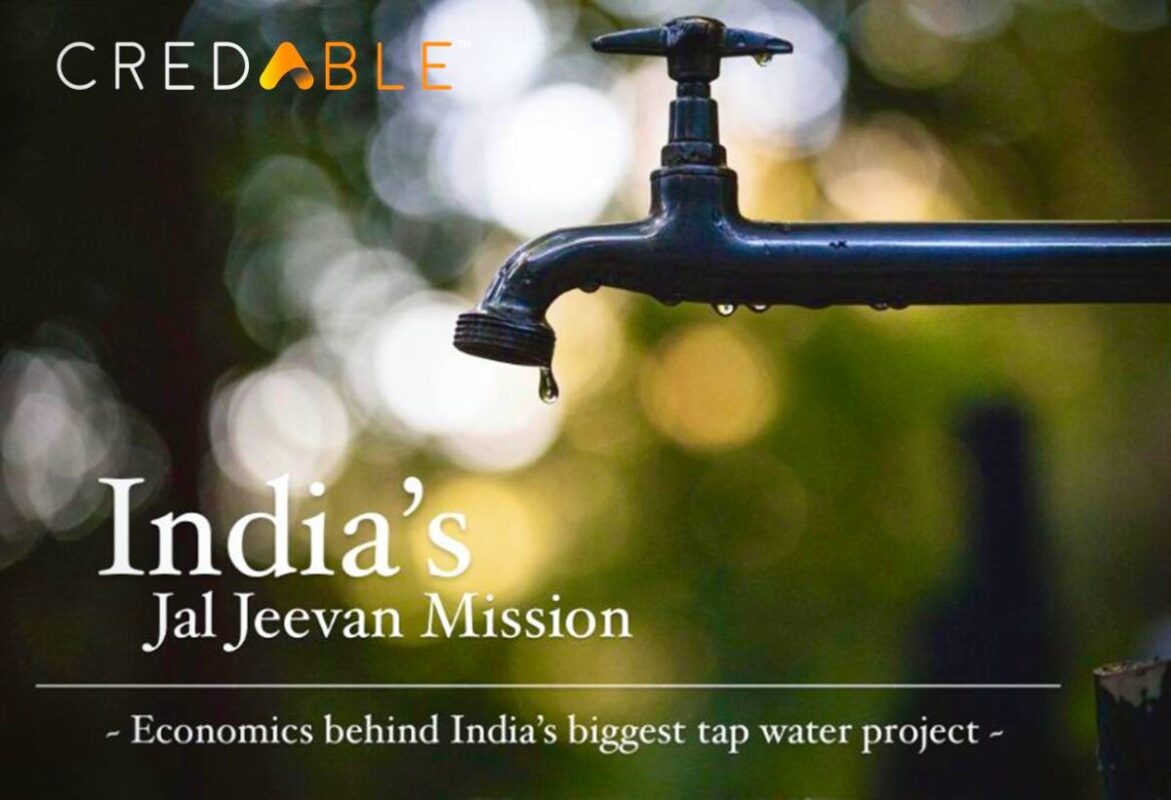Jal Jeevan Mission: Unravelling the Funding of India’s Biggest Tap Water Project
Back in August 2019, India’s Prime Minister Narendra Modi announced the launch of the ‘Jal Jeevan Mission’, an ambitious tap water project on the occasion of Independence Day.
While some may call it a revamped scheme of the National Rural Drinking Water Programme (NRDWP) launched in 2009, the Jal Jeevan Mission was introduced with the goal of providing clean tap water to nearly 192 million households across 600,000 villages, by 2024.
In India, this is certainly no mean feat. Considering how even though the country is home to nearly 18% of the world’s population, it has only 4% of the global freshwater resources. India’s water-stressed villages haven’t had it easy for years now, owing to recurring droughts and extreme climate changes.
The Jal Jeevan Mission is one of the biggest water projects undertaken by the Government of India. The successful implementation of the project demands robust financial planning along with the mobilization of adequate resources, timely fund allocations and prudent utilisation of the allocated funds.
Let’s dive deeper into the economics behind the Jal Jeevan Mission.
The Jal Jeevan Mission: A flagship scheme of the government
In India, access to safe tap water remains a privilege for many, especially for those in the rural parts of the country. In today’s world, primitive solutions of digging wells and installing hand pumps, no longer hold good!
Piped water supply is not universally available in the country. Moreover, tap water is not considered potable by many. Add to that, the overexploitation for agriculture has led to the depletion of groundwater levels in the country.
With nearly 40 million Indians suffering from waterborne diseases every year, the government stepped in to take action and narrow the demand-supply gap for safe drinking water in the country. The Jal Jeevan Mission was also launched with an aim to put an end to the drudgery faced by women and girls in rural India who, for centuries now, have been walking miles to access a minimal amount of portable water.
The Jal Jeevan Mission is a time-bound scheme promising ‘Har Ghar Jal’ by 2024, which means in another 2 years every rural household will have access to a piped water supply.
Taking stock: The progress made so far
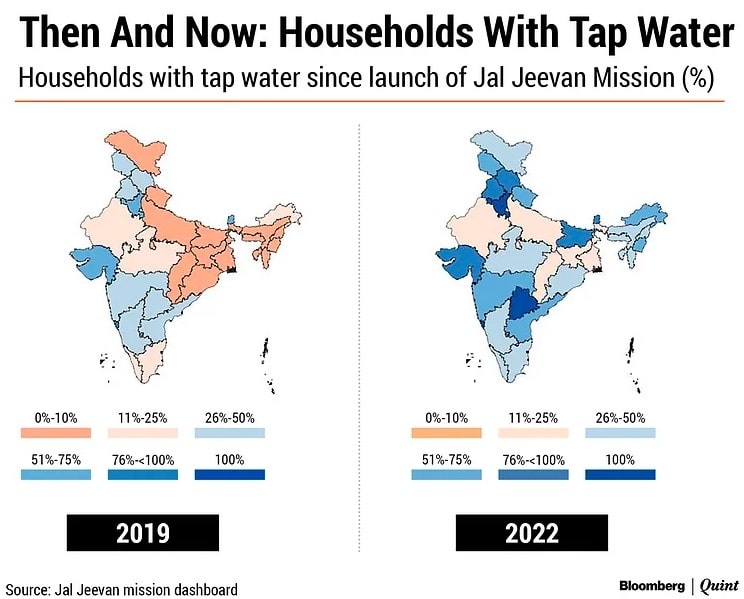
Back when the program was launched in 2019, only 18% of the rural households had access to Piped Water Supply (PWS). Towards the end of FY 2020, 21.3% of rural households had access to a water pipeline. Over the course of the following financial year, nearly 38% of the rural households secured access to pipelines. Fast forward to today, close to half of the rural households, i.e, 47.28% have access to piped water supply, according to the most recent reports by the Ministry of Jal Shakti.
Goa and Telangana have achieved 100% coverage of functional tap water connections, along with Andaman and Nicobar Islands, Dadra and Nagar Haveli, Haryana and Puducherry.
That said, there is a lot that remains to be done, as overall only 37% of the rural households have access to Functional Household Tap Connection (FHTC). Furthermore, the situation in states like Uttar Pradesh and Mizoram is considerably worse, with poor connectivity to taps with running water.
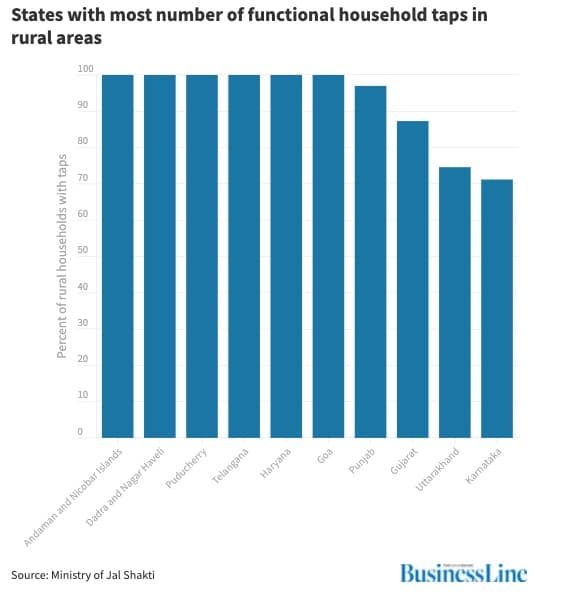
Capital expenditure needs and budgetary allocations
A lot of careful financial planning and stringent pooling of resources have gone in to implement this massive tap water project by the government. The financial assistance from the Centre is allocated via two sources — Gross Budgetary Support (GBS) and Extra Budgetary Resources (EBR).
At the time of inception, the estimated outlay of the mission, for the entire stretch of 5 years was Rs 3.60 Lakh Crore. To break it down, Rs. 2.08 Lakh Crore was to be allocated by the Centre and Rs.1.52 Lakh Crore by the State governments.
Last year, in Budget 2021, the government announced the launch of Jal Jeevan Mission Urban with an objective to bring clean water to 28.6 million households in 4,378 urban local bodies through tap connections.
According to the experts, while the true test lies in ensuring source sustainability and the quality of water supply — the allocation of funds towards this project will help in taking tap water connections to the remaining households, both in the rural and urban sectors.
Over the years, we have witnessed a significant increase in the budget allocation for Jal Jeevan Mission, with the latest budget 2022, allocating Rs 60,000 crore for the scheme.
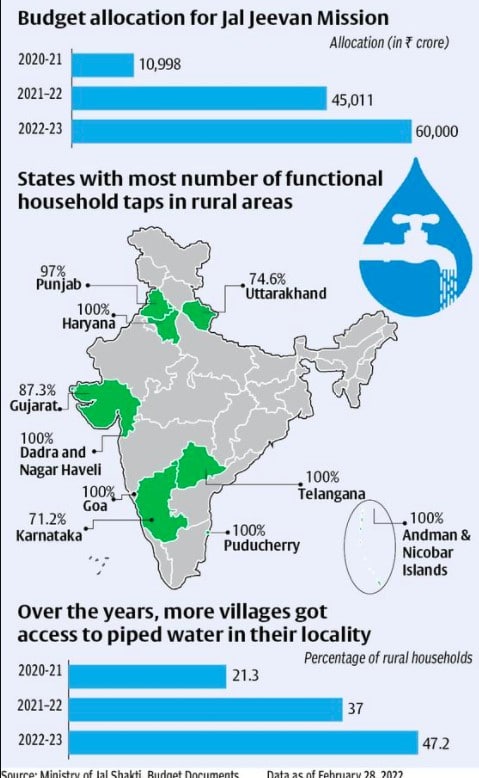
Coming to the costing for this project, the total outlay is calculated by considering the remaining households to be given FHTCs as ‘per household cost’ for different types of schemes. Under this project, a dedicated Integrated Management Information System (IMIS) has been set up to capture every FHTC. Based on the data provided by the State governments on the IMIS, the number of balance households to be provided with FHTC are arrived at. Additionally, on average, the number of persons per household is considered to be five.
Here’s a snapshot of the per-household average cost that has been considered to calculate the total fund requirement:
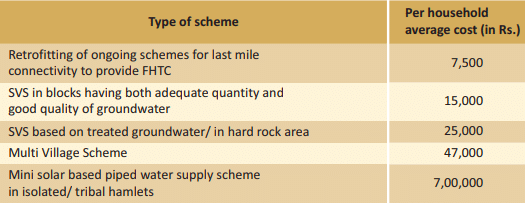
The criteria for allocation of the funds
Under this mission, a five-year State Action Plan has to be prepared by every state where they will have to give a projection of the annual target of FHTCs and the corresponding financial requirements. Every scheme under the Jal Jeevan Mission will need to be implemented without cost and time overrun.
In the Jal Jeevan Mission, the following criteria will be followed for fund allocation — for both the budgetary and extra-budgetary resources:
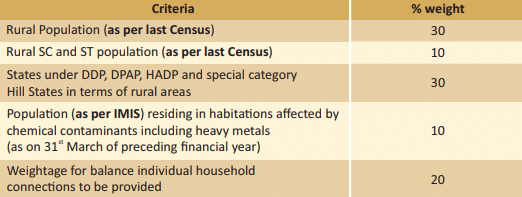
The mission to bring tap water to millions of households
Globally, cities like New York, London and Singapore have made considerable headway in ensuring the supply of clean drinking water from the tap. Under the Jal Jeevan Mission, India too has made significant progress in the provision of safe drinking water to both the urban and rural populations.
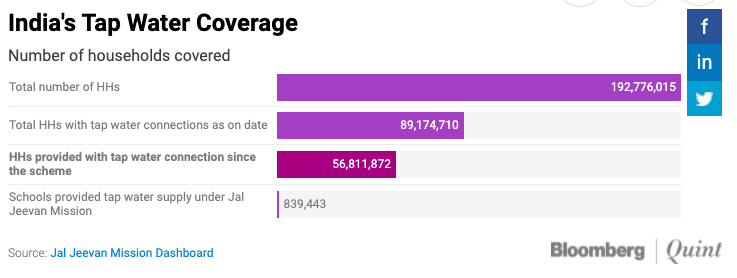
In 2021, Puri, a city in Odisha became the first city in India to provide a 24×7 piped potable water supply in every household.
What the city of Puri has achieved is certainly laudable. The same can be achieved for the entire nation with substantial working capital investments and proper planning.
Think Working Capital, Think CredAble!
